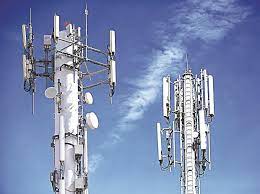Bharat 6G Project:

The Prime Minister has unveiled a Vision Document to roll out high-speed 6G Communication Services by 2030 and also launched Bharat 6G Project to identify and fund research and deployment of the next-generation technology in India.
- The Government has also launched the ‘Call Before You Dig (CBuD)’ app to facilitate coordination between excavation agencies and underground utility owners to prevent damage to utilities due to digging
- Bharat 6G Project will be implemented in two phases, the first one from 2023 to 2025 and the second one from 2025 to 2030.
- The government has also appointed an apex council to oversee the project and focus on issues such as standardization, identification of the spectrum for 6G usage, create an ecosystem for devices and systems, and figure out finances for research and development, among other things.
- A key focus of the council will be on new technologies such as Terahertz communication, radio interfaces, tactile internet, artificial intelligence for connected intelligence, new encoding methods and waveforms chipsets for 6G devices.
- In phase one, support will be provided to explorative ideas, risky pathways and proof-of-concept tests.
- Ideas and concepts that show promise and potential for acceptance by the global peer community will be adequately supported to develop them to completion, establish their use cases and benefits, and create implementational IPs and testbeds leading to commercialisation as part of phase two.
- It aims to enable India to become a leading global supplier of intellectual property, products and solutions of affordable 6G telecom solutions and identify priority areas for 6G research based on India’s competitive advantages.
6G Technology:
- 6G (Sixth-Generation Wireless) is the successor to 5G cellular technology.
- It will be able to use higher frequencies than 5G networks and provide substantially higher capacity and much lower latency (delay).
- One of the goals of 6G internet will be to support one microsecond-latency communication (delay of one-microsecond in communication).
- This is 1,000 times faster – or 1/1000th the latency – than one millisecond throughput.




